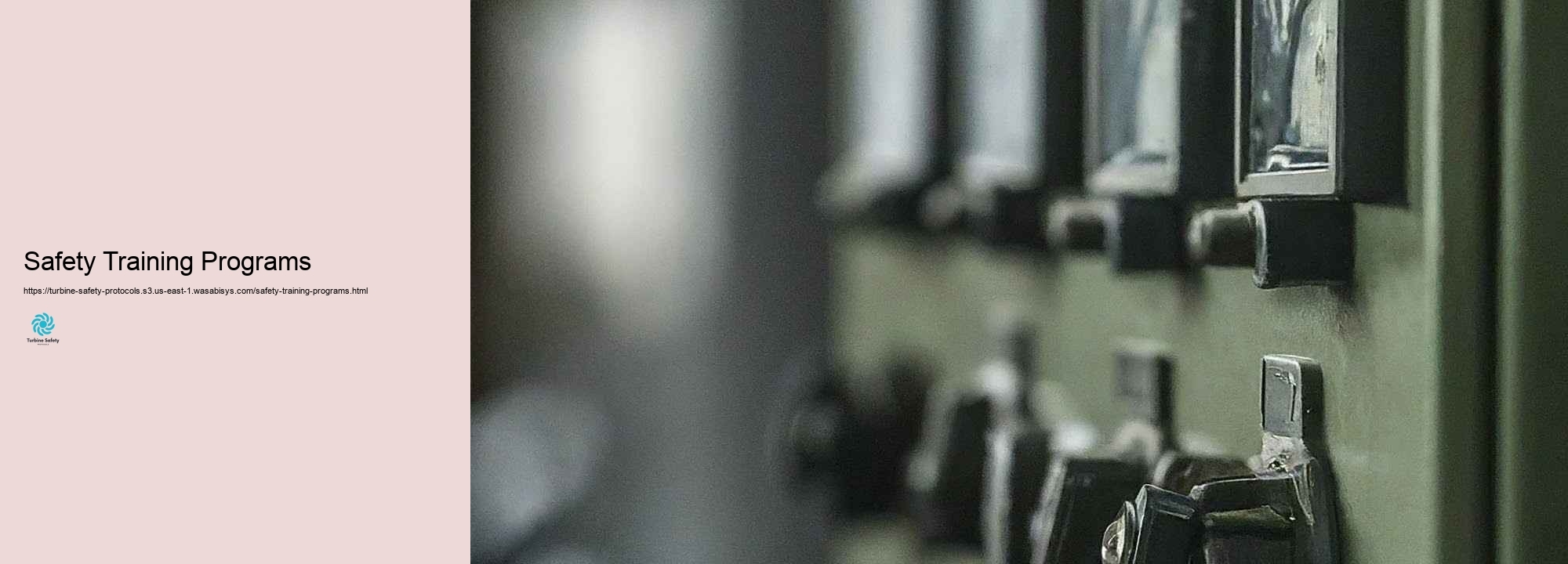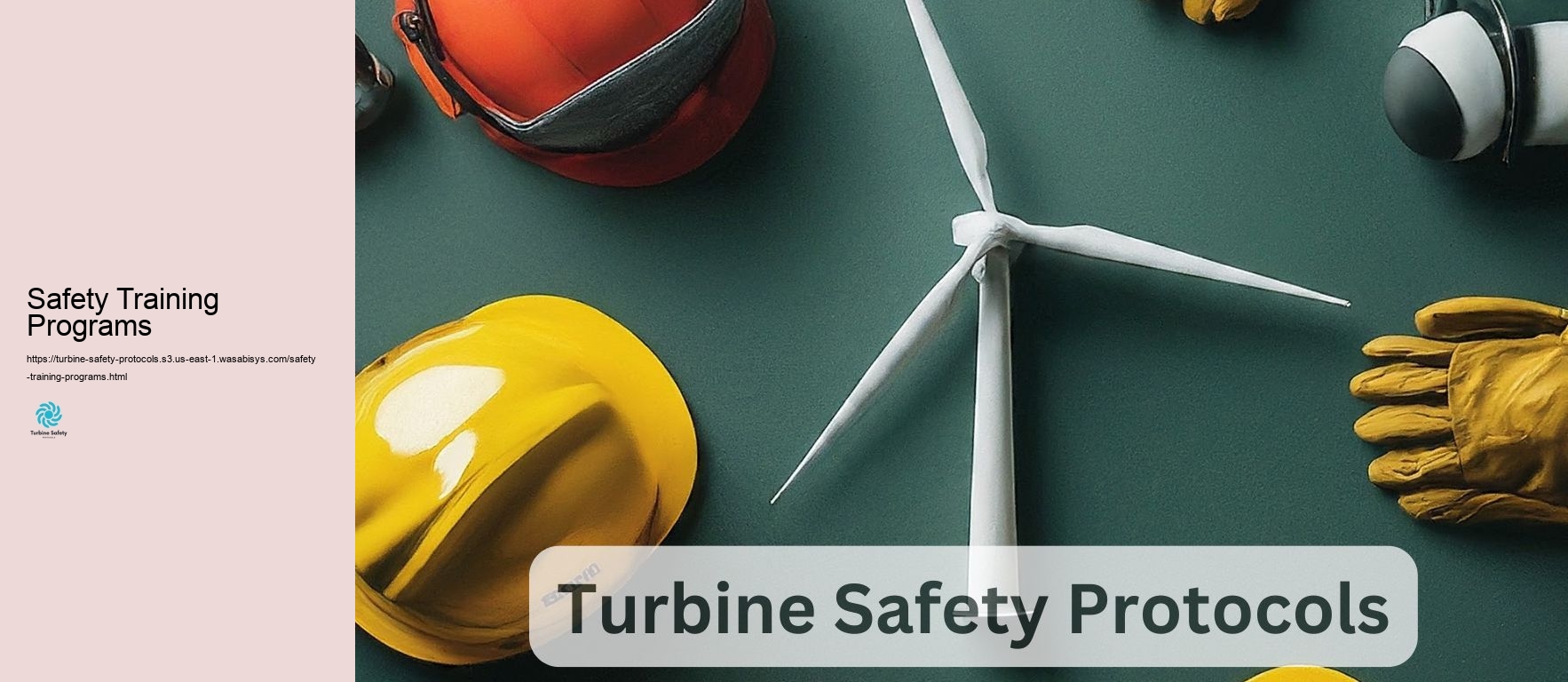

Turbine safety protocols are vital parts of power generation treatments, created to guard employees, tools, and the setting from possible threats connected with turbine operation. These protocols include a range of practices, procedures, and standards that control every aspect of turbine keeping track of, from regular upkeep to emergency circumstance feedback. Understanding and carrying out these safety protocols is vital for making certain the safe, effective, and trustworthy procedure of turbines in numerous power generation setups. At the core of turbine safety protocols is the principle of threat analysis and management. This includes systematically identifying prospective risks related to turbine procedure, assessing the possibility and potential repercussions of these risks, and applying activities to reduce or eliminate risks. Risk evaluations are typically done regularly and upgraded whenever there are adjustments in tools, therapies, or operating problems. Specific safety devices (PPE) establishes an important line of defense in turbine safety protocols. Counting on the certain job and environment, PPE might consist of construction hats, shatterproof glass, ear defense, steel-toed boots, flame-resistant clothes, and loss defense devices. Appropriate training in the use, upkeep, and restrictions of PPE is essential to ensure its effectiveness in shielding employees from possible threats. Lockout/tagout (LOTO) treatments are important to turbine safety, specifically during repair work and maintenance procedures. These treatments guarantee that potentially hazardous energy resources are successfully separated and taken care of prior to job begins. LOTO protocols typically involve de-energizing tools, locking out power seclusion tools, and recognizing them to indicate that work is in development. Just recognized staff members are permitted to get rid of locks and tags, ensuring that devices is not inadvertently invigorated while work is being done. Restricted area accessibility treatments are an added crucial component of turbine safety protocols. A number of areas within turbine systems, such as central heating boilers, condensers, and tank, are identified as constricted locations as a result of their restricted approaches of accessibility and departure and opportunity for hazardous ambiences. Strict protocols govern access right into these locations, containing weather screening, air flow, rescue intending, and making use of certified aides to watch on workers inside the location. Loss defense is an extremely important worry in turbine safety, especially for wind generators and various other high frameworks. Comprehensive loss safety and security protocols include making use of guardrails, safeguard, and individual loss arrest systems. Staff members are learnt the appropriate use of loss protection devices and the acknowledgment of fall threats. Regular examination and upkeep of autumn protection tools are essential parts of these protocols. Electric safety protocols are critical in turbine operations because of the visibility of high-voltage systems. These protocols include making use of shielded tools and tools, suitable grounding therapies, and the application of arc flash defense steps. Only certified electric employees are allowed to work with boosted tools, and rigorous therapies manage the de-energization and re-energization of electrical systems. Fire safety is another crucial facet of turbine safety protocols. This includes the arrangement and maintenance of fire exploration and reductions systems, regular fire drills, and training in utilizing firefighting devices. Protocols furthermore address the correct storage space and handling of combustible products and the implementation of warm work treatments for activities such as welding or grinding that might possibly stir up fires. Emergency situation activity prep work is a necessary aspect of turbine safety protocols. This entails establishing and regularly updating comprehensive emergency scenario feedback means that address different possible situations, such as fires, explosions, chemical spills, or extreme weather condition events. Normal drills and simulations are performed to make certain that all employees know with emergency situation therapies and can respond successfully in crisis scenarios. Safety Training Programs Communication protocols play an essential function in turbine safety. Safety Training Programs Clear, effective communication is essential for collaborating tasks, reporting risks, and replying to emergency situation situations. This contains the use of standard terms, clear signs and labeling, and established networks for reporting safety concerns or near-miss occurrences.
Generators are essential elements in power generation, and their risk-free treatment and upkeep are extremely important to make sure the dependability of power supply and the safety of workers. Turbine maintenance and operation involve a range of tasks that, if not executed appropriately, can cause mishaps, injuries, and also fatalities. Therefore, sticking to essential safety procedures is essential to decrease threats and assurance a risk-free work environment. Prior to any type of maintenance job beginnings, it is vital to do comprehensive pre-maintenance checks. These checks include evaluating the turbine's useful background, evaluating the turbine and its components for any type of sort of indications of wear or damages, and guaranteeing that all needed safety tools is offered and in wonderful condition. In addition, all staff members involved in the upkeep needs to be properly educated and knowledgeable about the specific safety treatments related to the turbine variation and the tasks useful. Among among one of the most crucial safety therapies in turbine maintenance is the lockout/tagout(LOTO )treatment. This therapy makes certain that the turbine is safely de-energized and can not be started inadvertently throughout upkeep. LOTO involves actually securing the turbine's power source and recognizing it to educate others that upkeep remains in growth. This activity is vital to quit unanticipated start-up, which can lead to serious injuries or casualties. Individual Safety Devices (PPE) is crucial for securing employees from countless threats throughout turbine maintenance and operation. PPE consists of hard hats, shatterproof glass, handwear covers, earplugs, and respirators. Each thing of PPE deals a specific objective, such as shielding the head from dropping points, safeguarding the eyes from bits, or securing versus listening to damage from loud noises. Making certain that all workers wear the ideal PPE is vital to decline the danger of injury. Turbine maintenance generally demands getting in constrained areas, such as the turbine covering or piping systems. Constricted space entry presents considerable threats, including asphyxiation, surge, and entrapment. For that reason, it is essential to adhere to strict safety protocols for limited room entry, consisting of obtaining proper licenses, making use of suitable air circulation systems, and assuring consistent keeping an eye on of the atmosphere within the constrained area. Electric safety is a necessary aspect of turbine upkeep and procedure. Wind turbines are powered by high-voltage electric systems, which can be dangerous if not handled successfully. Making certain that all electrical systems are de-energized prior to maintenance, making use of safeguarded tools, and sticking to right grounding procedures are vital to prevent electrical shocks and crashes. Fire safety is another important concern in turbine maintenance and treatment. Wind wind turbines and their linked systems can generate promotes or warm, which can stir up combustible materials. Making sure that fire extinguishers are conveniently supplied, maintaining a clean and clutter-free workplace, and following proper hot job licenses are important to prevent fires. Normal training and drills are needed to ensure that all workers understand with safety treatments and can respond properly in emergency situation scenarios. Training must cover all components of turbine upkeep and procedure, including LOTO treatments, PPE use, limited space entrance protocols, electrical safety, and fire safety. Conducting normal drills assists to enhance this understanding and sees to it that workers can act without delay and suitably in instance of an emergency situation. Continuous keeping an eye on and renovation of safety treatments are vital to warranty that they remain reliable and relevant. This includes on a regular basis analyzing safety protocols, upgrading procedures as needed, and integrating lessons gotten from events or near misses out on. Continuous improvement aids to maintain a society of safety within the firm and guarantees that all workers are fully commited to sticking to crucial safety procedures. Making sure the risk-free operation and maintenance of wind turbines calls for a considerable technique that consists of pre-maintenance checks, lockout/tagout procedures, individual protective tools, limited room entrance protocols, electric safety, fire safety, regular training and drills, and consistent monitoring and enhancement. By sticking to these important safety therapies, companies can drastically decrease the danger of problems and injuries, assuring a safe office for all workers involved in turbine maintenance and operation.
Ensuring the safety of wind turbine operations is non-negotiable! From rigorous safety protocols to continuous monitoring, every step counts in protecting our workforce and maintaining operational integrity.https://t.co/6qMvcBwr4R
— Turbine Training And Operation (@turbinetraine) August 20, 2024
Ensuring the safety of workers working with and around wind turbines is critical in the wind power industry. Implementing reliable turbine safety protocols is important for quiting accidents, guarding workers, and keeping the stability of wind energy treatments. This step-by-step overview information the treatment of developing and applying thorough safety protocols for wind turbine operations. The primary step in carrying out reliable turbine safety protocols is to conduct a comprehensive risk examination. This requires figuring out all potential risks connected with turbine operation, upkeep, and repair solution. Common threats consist of declines from altitude, electrical threats, mechanical dangers from transferring parts, and eco-friendly threats such as serious climate. The risk analysis should be extensive, covering all aspects of turbine task from ground procedures to nacelle access to and blade upkeep. When dangers are established, the complying with action is to establish specific safety procedures to address each recognized danger. These procedures needs to be comprehensive and cover all facets of turbine job. As an example, protocols for operating at elevation demands to consist of specifications for loss defense devices, treatments for securing tools, and standards for safe climb and descent of the turbine tower. Electric safety therapies should certainly details lockout/tagout processes, suitable usage safeguarded tools, and emergency activity prepare for electrical incidents. Training is an essential component of applying safety protocols. All personnel taking care of or around wind generators should receive detailed safety training. This training requirements to cover basic safety ideas in addition to particular therapies pertinent to their duties. It's vital to consist of both academic knowledge and helpful capacities training. As an example, staff members need to not only understand the value of loss protection yet furthermore be proficient in suitably utilizing and making use of harnesses and different other safety devices. Creating a clear pecking order and communication system is the complying with crucial action. This involves marking safety cops, defining roles and obligations for all team members, and creating clear communication protocols. Emergency situation feedback procedures require to be simply specified, consisting of specifically just how to get in touch with emergency circumstance remedies and leave harmed staff members from the turbine. Regular safety conferences and rundowns ought to be established to ensure continual interaction about safety problems and updates to protocols. Applying a robust system for individual safety gadgets (PPE) is essential. This involves not simply offering appropriate PPE such as building and construction hats, unbreakable glass, gloves, and decrease defense devices yet additionally making sure that all devices is successfully kept, taken a look at continually, and replaced when required. Clear guidelines should be developed for when and simply exactly how PPE needs to be used, and there ought to be definitely no resistance for non-compliance with PPE requirements. Producing a society of safety is crucial for the success of any kind of safety approach. This involves cultivating a setup where safety is everyone responsibility and where workers really feel urged to speak out about safety worries without concern of reprisal. Leadership has to noticeably support and prioritize safety, establishing an example for all workers. Applying an advantage system for safety conformity and advancement can help enhance the significance of safety in everyday operations. Regular safety audits and analyses are essential for protecting trusted safety protocols. These require to be conducted at established intervals and has to cover all elements of turbine treatments. Audits ought to analyze consistency with popular safety treatments, the issue of safety devices, and the total safety culture of the organization. Any kind of issues recognized throughout these audits needs to be resolved immediately, with clear activity methods and follow-up treatments. Creating and applying an incident reporting and exam system is an additional essential step. All accidents, near-misses, and safety issues need to be reported and totally checked out. This system needs to be produced to identify origin of incidents and to create safety nets to stay clear of similar occurrences in the future. It's vital to produce an atmosphere where reporting is urged and viewed as a positive activity in the direction of boosting total safety. Including modern technology right into safety protocols can substantially improve their efficiency. This could consist of using drones for turbine assessments to minimize the demand for dangerous climbs up, carrying out digital systems for safety lists and insurance coverage, or making use of wearable innovation to check staff member safety in real-time. As brand-new innovations arise, safety protocols ought to be updated to integrate these advancements. Partnership with turbine suppliers and market companions is an important facet of applying trustworthy safety protocols. This involves continuing to be current with manufacturer suggestions for safe procedure and upkeep, along with taking part in market online forums and functioning teams focused on safety. Sharing best techniques and lessons discovered with other motorists can aid boost safety across the market. Weather monitoring and response protocols are important for wind turbine safety. This includes implementing systems to track neighborhood climate condition and creating clear standards for when to put on hold procedures because of damaging climate condition. Therapies should remain in area for securing gadgets and leaving workers in case of major climate events. Establishing protocols for taking care of tiredness and anxiety and anxiety among employees is one more vital activity. Working on wind generators can be actually and mentally needing, and fatigue can significantly rise the hazard of collisions. Performing work-rest routines, providing ideal breaks, and monitoring worker exhaustion levels are all important aspects of a detailed safety treatment. Regular analysis and upgrade of safety protocols is required to guarantee they continue to be reliable and proper. This need to be done a minimum of yearly, or more regularly if there are significant modifications in procedures, tools, or policies. The analysis procedure need to include input from workers whatsoever degrees, in addition to element to think about of sector perfect methods and any type of sort of lessons gotten from cases or near-misses. It's essential to establish metrics for measuring the effectiveness of safety protocols. This might include tracking incident prices, conformity with safety procedures, and interaction in safety training. Regular coverage on these metrics can aid acknowledge
locations for improvement and show the company commitment to safety. Executing efficient turbine safety protocols is an extensive treatment that calls for recurring dedication and focus. By following these steps, wind power operators can create a sturdy safety culture that safeguards employees, decreases risks, and adds to the complete success and sustainability of wind power treatments. Remember, safety is not an one-time implementation nevertheless a constant process of improvement and watchfulness.
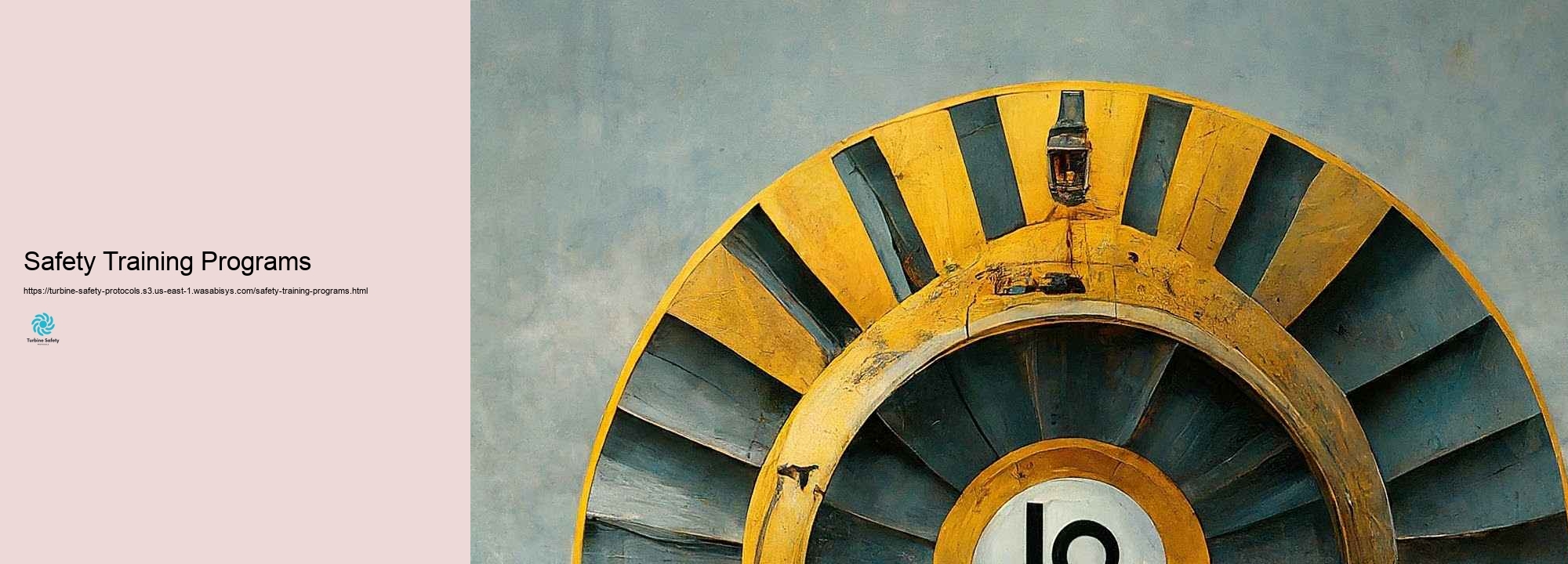
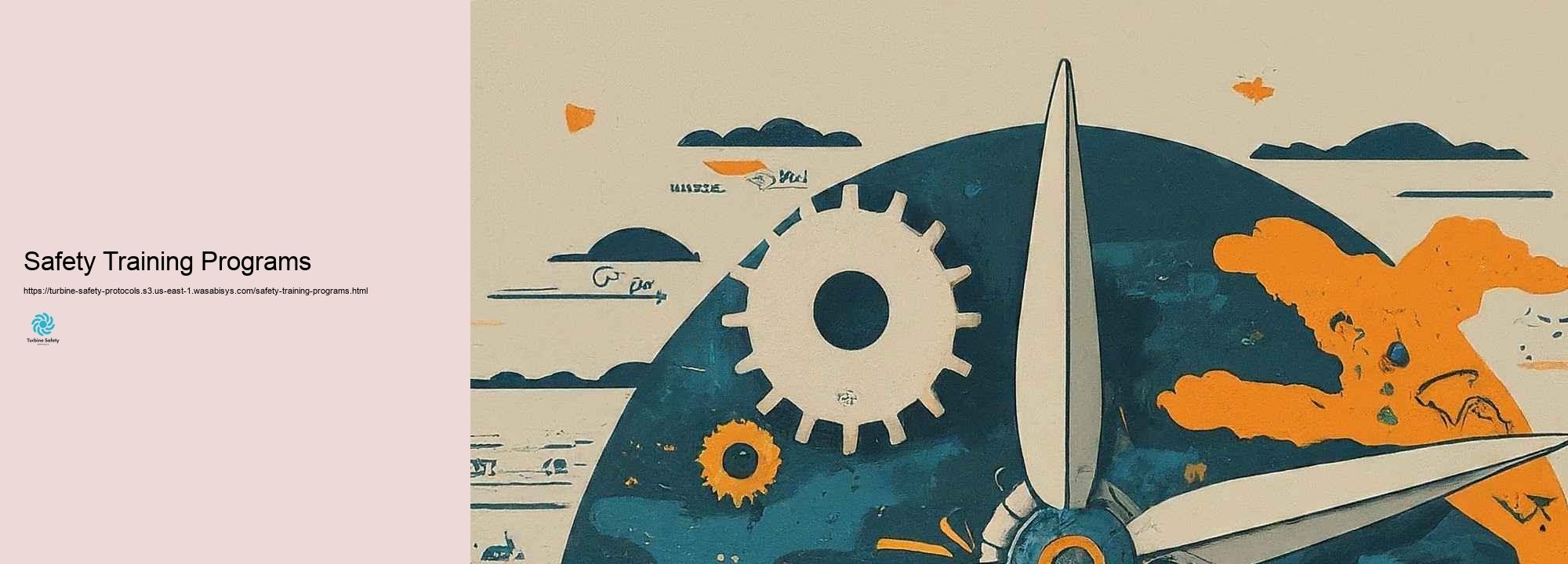
Safety requirements and compliance are important in turbine operations, whether in wind, hydroelectric, or thermal nuclear power plant. These requirements are created to safe and secure employees, make certain practical stability, and lessen eco-friendly impacts. Complying with these needs is not merely a lawful demand yet additionally a necessary element of maintaining effective and sustainable power manufacturing. Among the key safety demands in turbine operations is the Occupational Safety and Wellness Management (OSHA) guidelines. These standards cover a huge variety of safety aspects, including fall protection, electrical safety, and hazard interaction. For wind generators, OSHA has details criteria dealing with the special obstacles of operating at elevations and in confined areas. Conformity with OSHA standards consists of regular safety audits, proper training of employees, and application of safety protocols customized to the specific dangers connected with turbine procedures. The International Electrotechnical Compensation (IEC) offers an added established of vital standards for turbine safety, specifically for wind turbines. The IEC 61400 collection of standards covers different facets of wind turbine style, configuration, and operation. These requirements address concerns such as structural security, electric systems, and efficiency evaluation. Compliance with IEC criteria is frequently a need for certification and is essential for making certain the honesty and safety of wind turbine treatments. For hydroelectric generators, the Federal Energy Regulatory Commission (FERC) in the USA states detailed safety standards. These guidelines cover dam safety, emergency situation action approaches, and useful treatments. Consistency with FERC needs consists of typical evaluations, upkeep of safety tools, and advancement of long lasting emergency scenario reaction protocols. In the world of thermal nuclear power plant, the American Culture of Mechanical Designers (ASME) provides important safety criteria for turbine operations. The ASME Central Home Heating Boiler and Pressure Vessel Code is specifically ideal, taking care of the design, building and construction, and examination of pressure-containing components in thermal nuclear power plant. Adherence to these requirements is crucial for safeguarding versus tragic failings and assuring the lasting stability of turbine systems. Ecological compliance is an additional important facet of turbine operations. For wind generators, this commonly entails adherence to wild animals protection demands, such as those set by the united state Fish and Wild Animals Service. These requirements function to reduce the effect of wind ranches on bird and bat populations. Conformity may include accomplishing wild animals tracking programs, changing turbine procedures throughout motion periods, and using modern innovations to prevent wild animals crashes. In hydroelectric procedures, ecological conformity commonly focuses on water high quality and fish defense. Criteria recognized by environmental business need operators to protect minimal water streams, screen water quality, and use fish circulation systems. Consistency with these standards is important for maintaining power generation with environmental conservation. For thermal nuclear power plant, air high quality criteria recognized by epa are a crucial conformity location. This entails sticking to discharge limitations for toxins such as sulfur dioxide, nitrogen oxides, and fragment matter. Conformity usually calls for the setup and maintenance of exhaust control technologies and routine checking of exhaust gases. Cybersecurity has in fact happened a progressively crucial facet of safety criteria in turbine operations. The North American Electric Reliability Firm (NERC) Crucial Infrastructure Safety (CIP) standards give guidelines for safeguarding the functional innovation systems that control turbines and various other power generation devices. Consistency with these requirements consists of executing durable cybersecurity actions, performing regular susceptability analyses, and training employees in cybersecurity finest methods. Safety demands additionally incorporate the upkeep and examination of wind turbines. For wind wind turbines, this consists of normal exams of blades, nacelles, and towers. Demands generally specify the consistency and level of these assessments, in addition to the qualifications needed for assessment workers. Equivalent standards exist for hydroelectric and thermal generators, with details emphasis areas such as blades security, birth trouble, and resonance evaluation. Emergency situation preparedness is one more vital facet of safety standards in turbine procedures. This includes creating and keeping emergency reaction prepares that address many situations, from devices failings to all-natural calamities. Consistency with these criteria normally calls for normal drills, sychronisation with local emergency scenario remedies, and constant upgrading of activity protocols based upon lessons figured out and progressing excellent approaches. Personal safety devices (PPE) requirements are crucial in guaranteeing worker safety during turbine procedures and upkeep. These requirements specify the ideal PPE for various tasks, from fundamental building hats and shatterproof glass to specialized fall security tools for wind turbine professionals. Consistency entails not simply giving the right PPE yet furthermore guaranteeing its ideal use and maintenance. Training and qualification needs play an important duty in preserving safety in turbine operations. Lots of territories call for operators and upkeep workers to go through specific training and acquire accreditations. For wind turbines, this may include certifications in operating at altitudes, rescue treatments, and specific turbine innovations. Hydroelectric and thermal plant operators commonly require accreditations in locations such as control location procedures, electric safety, and harmful material managing. Noise exhaust requirements are especially significant for wind turbines. Lots of areas have certain limitations on the noise degrees that wind generators can create, especially in distance to homes. Conformity with these criteria could include careful siting of wind turbines, application of sound decrease modern innovations, and routine tracking of sound levels. Fire safety criteria are necessary throughout all type of turbine operations. For wind generators, this consists of fire exploration and reductions systems in nacelles. In thermal plants, extensive fire safety systems are required throughout the facility. Conformity requires not just installing ideal fire safety gadgets nevertheless likewise carrying out routine fire drills and protecting clear emptying therapies. Quality administration requirements such as ISO 9001 are gradually being applied to turbine procedures. While not purely safety criteria, these premium quality management systems frequently incorporate safety elements and can add to overall functional safety by making sure constant, top quality procedures and treatments. Conformity with vital safety needs in turbine procedures is a varied and persisting procedure. It calls for a thorough technique that manage employee safety, environmental management, cybersecurity, and functional integrity. As contemporary technology and finest techniques advance, so also do these requirements, needing drivers to remain informed and versatile. By prioritizing conformity with these criteria, turbine drivers not simply please legal demands however similarly contribute to the complete safety, efficiency, and sustainability of energy manufacturing.
Turbine safety is an important component of wind power procedures, consisting of a variety of techniques and treatments developed to guard employees, tools, and the atmosphere. As wind generators continue to increase in measurement and intricacy, carrying out and sticking to finest safety techniques winds up being gradually essential. This write-up finds important techniques and strategies for lessening threats and safeguarding versus mishaps in turbine treatments and upkeep. Among the basic principles of turbine safety is comprehensive risk examination. Before any type of sort of work is achieved on or around a turbine, an in-depth evaluation of potential risks must be carried out. This includes analyzing environmental troubles, such as wind rate and weather report, along with the details threats associated with the work available. Threat evaluations ought to be lively, continually upgraded to mirror changing problems or new info, and connected simply to all workers connected with the treatment. Private Safety Devices (PPE) is a vital aspect of turbine safety. Employees must be provided with with suitable safety devices, consisting of construction hats, unbreakable glass, gloves, and steel-toed boots. For work at elevations, specialized loss security equipment is vital. This typically includes full-body harnesses, lanyards, and assistance points. Routine inspection and upkeep of PPE are vital to make certain its efficiency. Training in the right use and treatment of safety gadgets is just as crucial, as even the best gear is only dependable when made use of properly. Operating at heights deals one of the most substantial dangers in turbine procedures. Finest methods for elevation safety include utilizing fall apprehension systems, correct ladder safety protocols, and the application of rescue plans. Several wind ranches are currently adopting advanced accessibility systems, such as option lifts, to reduction the threats related to ladder climbs up. Typical training in altitude safety and rescue treatments is vital, consisting of functional exercises and simulations of emergency circumstance circumstances. Electric safety is another critical location in turbine procedures. Wind turbines involve high-voltage systems, and dealing with or around these systems require specialized knowledge and precaution. Lock-out/tag-out procedures are required when doing maintenance on electrical systems to assurance that equipment is suitably de-energized before task starts. Only certified and accredited workers need to deal with electrical systems, and normal electric safety training needs to be provided to all suitable team. Environment problem play a considerable role in turbine safety. High winds, lightning, and severe temperatures can all setting major risks to employees and tools. Using clear weather-related work protocols is essential. This might consist of establishing wind rate constraints for certain tasks, creating lightning safety procedures, and supplying standards for running in severe cozy or chilly. Real-time environment monitoring systems can aid vehicle drivers make enlightened choices concerning when it is safe to execute specific work. Limited area access is an added location of worry in turbine safety. Lots of aspects of a wind turbine, such as the nacelle or facility, can be categorized as constrained areas. Entrance right into these areas requires certain safety therapies, including weather screening, air circulation, and using a standby individual. Proper training in constrained area entryway and rescue is necessary for any type of sort of staff members that may require to run in these locations. Crane and lifting procedures are regularly needed for turbine maintenance and component substitute. These operations lug significant dangers and need mindful preparation and execution. Best methods contain comprehensive devices exams, clear communication protocols, and using certified drivers. Tons calculations, wind speed surveillance, and correct setting up methods are all necessary components of risk-free training procedures. Emergency action planning is a vital component of turbine safety. Every wind ranch should have an in-depth emergency reaction strategy that covers numerous conditions, including medical emergencies, fires, and serious weather occasions. Normal drills and simulations help warranty that all employees understand with emergency circumstance therapies and can respond properly in a dilemma. Communication is crucial to maintaining safety in turbine procedures. Clear and consistent communication protocols ought to be created for all activities, particularly those including numerous staff member or complex procedures. This consists of making use of standardized hand signals, radio interactions, and pre-task run-throughs. Language obstacles should be took care of, particularly on global tasks where workers may originated from diverse backgrounds. Upkeep and inspection programs play a vital feature in protecting against accidents. Regular assessments of turbine components, safety tools, and gain access to systems can help recognize feasible troubles before they result in accidents. Executing a robust precautionary maintenance program not just increases safety but additionally boosts the general stability and efficiency of the turbine. Human aspects and exhaustion management are necessary factors to take into consideration in turbine safety. Long modifications, challenging physical work, and the emotional demands of operating at elevations can all add to fatigue, which can increase the danger of accidents. Performing perfect work-rest schedules, providing adequate breaks, and security employee fatigue levels are important approaches for maintaining safety. Training and proficiency evaluation are basic to turbine safety. All workers managing or around wind generators require to receive extensive safety training, including both scholastic expertise and useful abilities. Typical correspondence training course and expertise assessments aid make sure that employees preserve their capabilities and continue to be current with one of the most recent safety techniques and standards. Paperwork and record-keeping are necessary components of a long lasting safety program. Keeping complete papers of training, analyses, incidents, and near-misses gives valuable data for boosting safety approaches with time. It in addition helps demonstrate compliance with regulative requirements and market demands. Advertising and marketing a strong safety culture is perhaps one of the most important facet of turbine safety. This includes cultivating an atmosphere where safety is prioritized at all degrees of the organization, from leading management to frontline employees. Urging open interaction concerning safety fears, recognizing and satisfying safe behaviors, and constantly striving for remodelling are all key elements of building a solid safety culture. Finest methods in turbine safety include a wide variety of strategies and approaches, from technological procedures and detailed controls to human aspects and business society. By carrying out these techniques continually and effectively, wind power drivers can significantly lessen threats and quit accidents, ensuring the safety of staff members and the lasting sustainability of wind energy tasks.
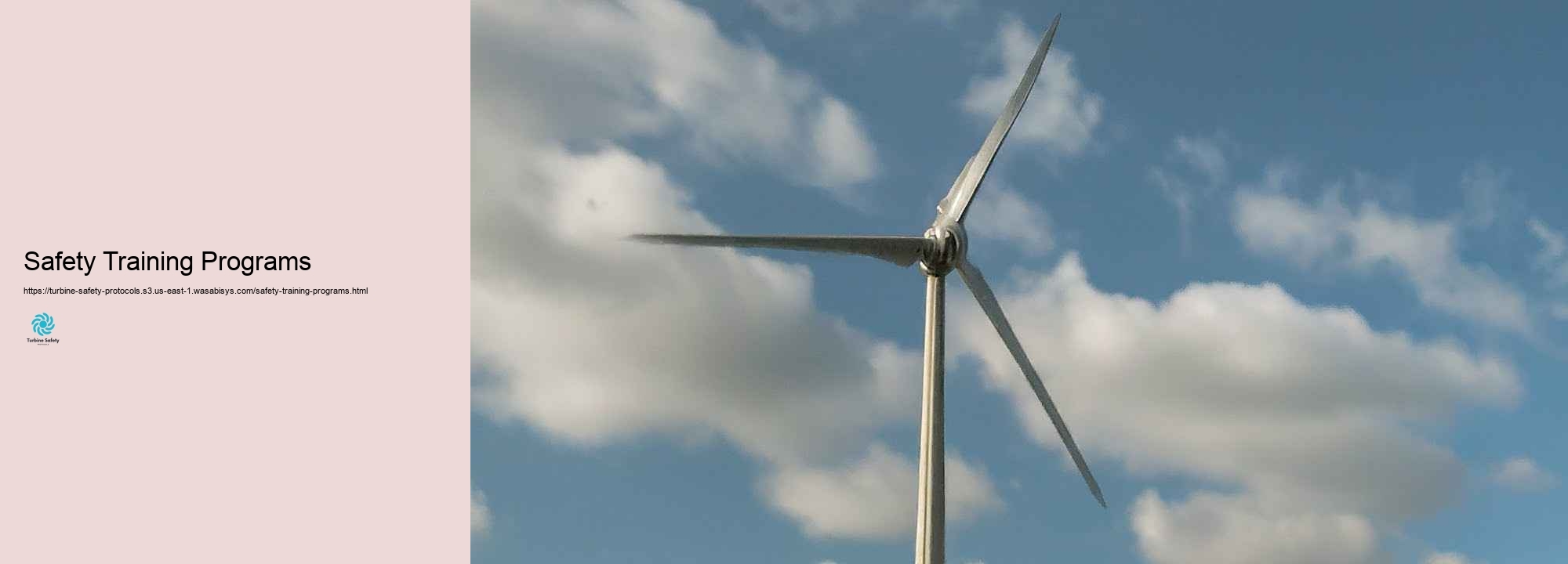
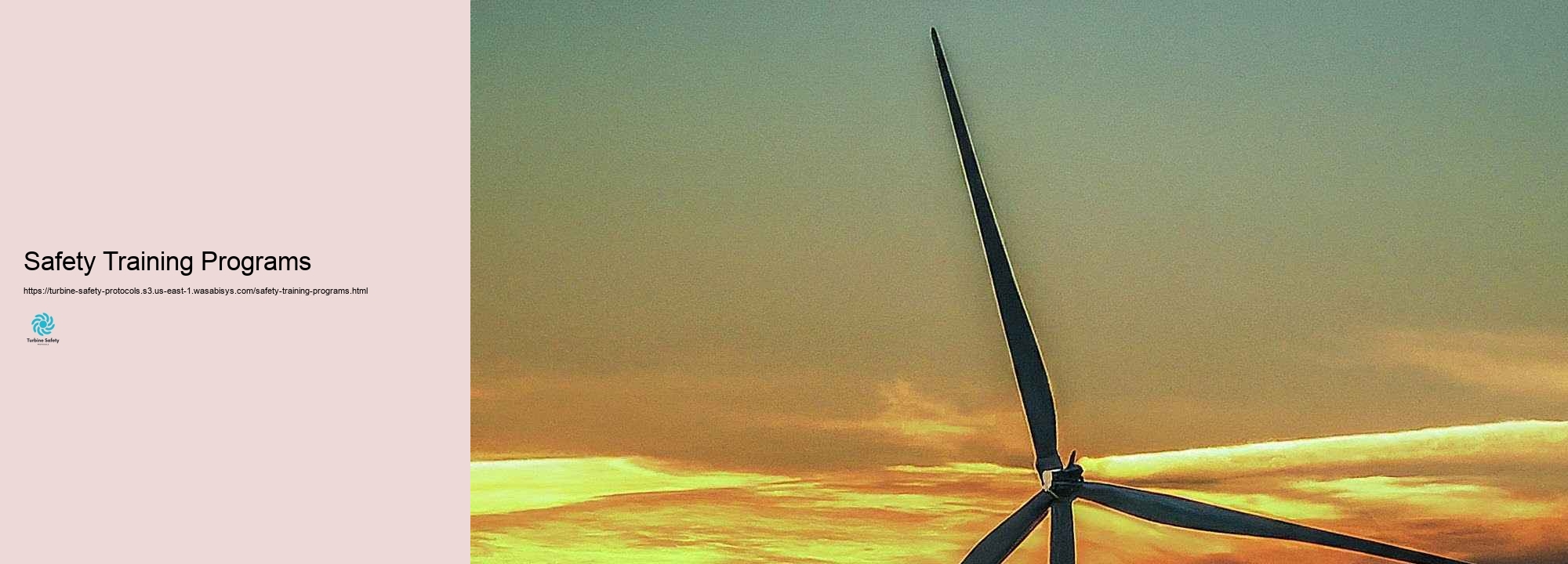
Safety devices plays a critical role in turbine operations, working as the really first line of defense against feasible dangers and making sure the health of workers working in power generation centers. The different variety of safety tools made use of in turbine procedures mirrors the intricate and potentially hazardous nature of these settings, where heats, pressurized systems, turning equipment, and electrical threats are normal. Individual Protective Devices (PPE) creates the framework of safety devices in turbine treatments.
Turbine safety protocols are made to guarantee the risk-free treatment and maintenance of wind turbines, which are essential elements in power generation. While safety nets are important, having robust emergency response and occasion monitoring approaches ready is just as vital. These plans assistance lower the effect of unforeseen occasions, shield workers, and reduce downtime. Efficient emergency circumstance responses and incident administration are important for keeping functional integrity and ensuring the health of those associated with turbine procedures. Emergency circumstance activity prep work requires developing comprehensive therapies for reacting to prospective events. This consists of acknowledging practical risks, such as fires, electric shocks, or mechanical failings, and outlining the actions to be absorbed each scenario. The method must cover timely activities, communication protocols, emptying therapies, and the roles and obligations of all employees required. Routine updates and evaluations of the emergency response strategy are required to assurance it remains important and efficient. Occasion reporting and documentation are necessary parts of emergency circumstance action and incident management. All instances, regardless of simply how minor, should certainly be entirely documented. This consists of information of the occasion, the actions taken, and any type of sort of injuries or damages sustained. Proper files assists in executing considerable examinations, identifying root causes, and executing corrective activities to prevent future occurrences. It likewise functions as a helpful source for training and boosting safety protocols. Training and drills are vital for ensuring that all workers are prepared to react successfully in emergency situation scenarios.
